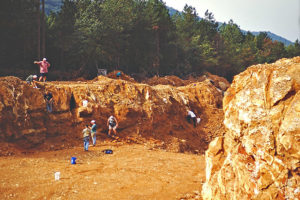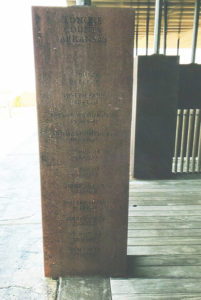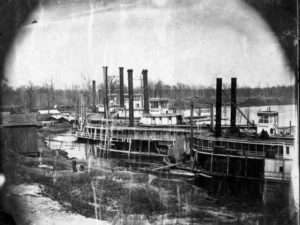calsfoundation@cals.org
The Encyclopedia of Arkansas: Creating a Fertile Field

If you have watched many movies from the famed Swedish director Ingmar Bergman, you have probably seen, in the bleak Scandinavian landscape he often depicts, ancient stone walls lining rural farmsteads or yards. These may seem like nothing more than a background detail while his characters in the foreground undergo exquisite crises of faith or identity, but those walls are not just utilitarian constructs but, rather, the very embodiment of generations of labor to make a living. In many locations, the Swedish soil is simply rocky, and making the land suitable for the plough entailed removing those stones, one by one, over years, decades, and centuries.

I came to identify with this labor upon moving to central Arkansas. See, I had grown up on the alluvial soils of the eastern part of the state, the Delta, where one could put a shovel into the ground and not typically encounter any sort of impediment sedimentary, igneous, or metamorphic. But when my wife and I bought a house in Little Rock in 2007, and I first tried my hand at gardening, I quickly discovered that I was going to need a pickaxe in order to make any progress through the gumbo of slate and quartz and whatnot. And now I have my own piles of rock, ever growing, as I continue to work on transforming the land.
In some ways, these rocks act, for me, as a metaphor that undergirds how I perceive our work here at the CALS Encyclopedia of Arkansas. Every newly uploaded entry is like a rock taken from the ground—not that it was ever an obstacle, but lifting it to the surface makes the land that much more tillable, more fertile, more capable of producing what you need or want. It is certainly true for my own research. I have lined up for publication two articles on the subject of lynching that were greatly facilitated by our entry on the subject and the chart containing links to hundreds of separate entries on specific events, many of which had never before been written about in their own right. Having that chart and those separate entries at hand made it so much easier to draw comparisons and consult original sources than would have been otherwise.
 I imagine that, someday, someone might want to write a book or article on the many steamboat disasters in Arkansas. And on that day, this person will find not only our overview piece on steamboat disasters, complete with handy chart giving the dates, names, and types of individual disasters, but also all those entries on the separate disasters themselves, events that had, until we developed entries on them, largely avoided the inquiring gaze of historians. The researcher in question will find fertile ground indeed because someone did all the hard work of pulling those subjects from the hidden recesses of the earth, leaving pliable land behind.
I imagine that, someday, someone might want to write a book or article on the many steamboat disasters in Arkansas. And on that day, this person will find not only our overview piece on steamboat disasters, complete with handy chart giving the dates, names, and types of individual disasters, but also all those entries on the separate disasters themselves, events that had, until we developed entries on them, largely avoided the inquiring gaze of historians. The researcher in question will find fertile ground indeed because someone did all the hard work of pulling those subjects from the hidden recesses of the earth, leaving pliable land behind.
Name any subject—elected officials, small towns, plane crashes, highways, waterways, historical properties, Civil War skirmishes, writers from Arkansas and books about the state, defunct schools and academies, Medal of Honor recipients, etc. We are moving in all directions at once to bring these subjects and more to the surface, creating a fertile field for research. Maybe future generations will forget why those stone walls were ever constructed, will never imagine how much work it took to make them, and what it meant to do so. That’s okay. Those Swedish peasants, they were working to make easier the life of their descendants, not just themselves. And so do we.
By Guy Lancaster, editor of the CALS Encyclopedia of Arkansas




